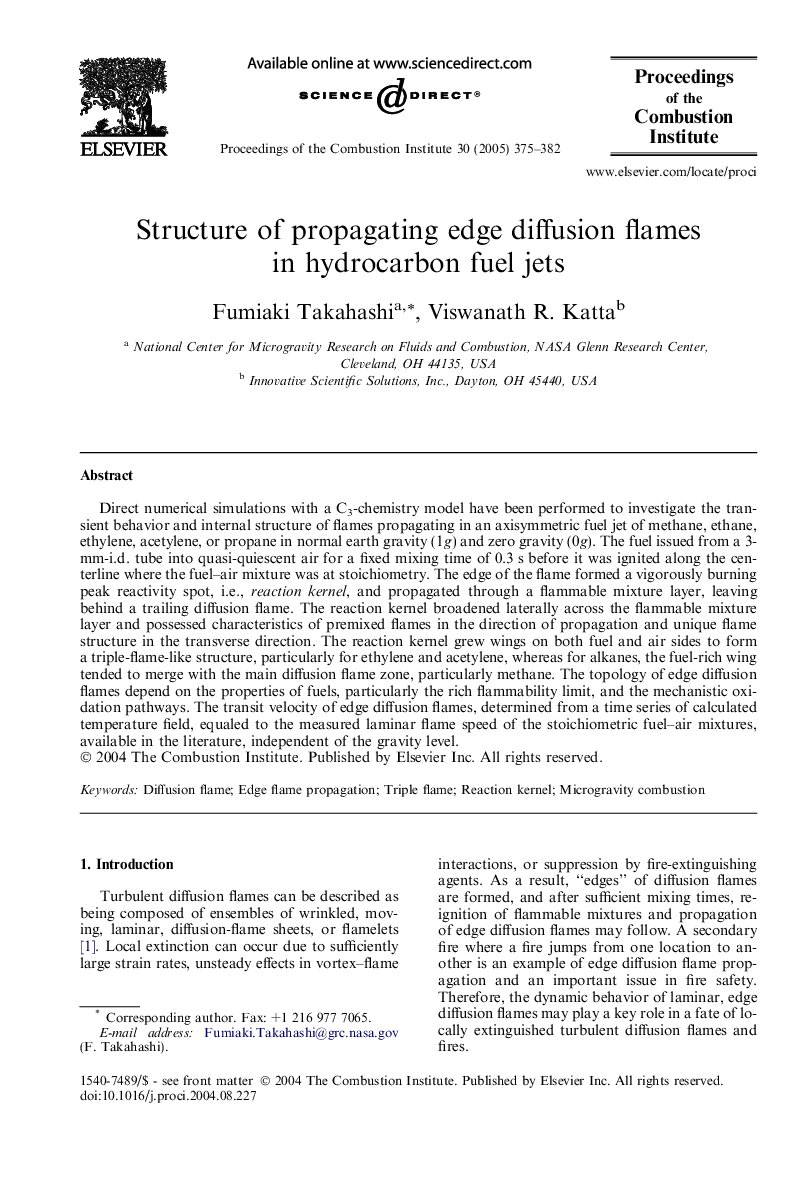| Article ID | Journal | Published Year | Pages | File Type |
|---|---|---|---|---|
| 9637356 | Proceedings of the Combustion Institute | 2005 | 8 Pages |
Abstract
Direct numerical simulations with a C3-chemistry model have been performed to investigate the transient behavior and internal structure of flames propagating in an axisymmetric fuel jet of methane, ethane, ethylene, acetylene, or propane in normal earth gravity (1g) and zero gravity (0g). The fuel issued from a 3-mm-i.d. tube into quasi-quiescent air for a fixed mixing time of 0.3Â s before it was ignited along the centerline where the fuel-air mixture was at stoichiometry. The edge of the flame formed a vigorously burning peak reactivity spot, i.e., reaction kernel, and propagated through a flammable mixture layer, leaving behind a trailing diffusion flame. The reaction kernel broadened laterally across the flammable mixture layer and possessed characteristics of premixed flames in the direction of propagation and unique flame structure in the transverse direction. The reaction kernel grew wings on both fuel and air sides to form a triple-flame-like structure, particularly for ethylene and acetylene, whereas for alkanes, the fuel-rich wing tended to merge with the main diffusion flame zone, particularly methane. The topology of edge diffusion flames depend on the properties of fuels, particularly the rich flammability limit, and the mechanistic oxidation pathways. The transit velocity of edge diffusion flames, determined from a time series of calculated temperature field, equaled to the measured laminar flame speed of the stoichiometric fuel-air mixtures, available in the literature, independent of the gravity level.
Related Topics
Physical Sciences and Engineering
Chemical Engineering
Chemical Engineering (General)
Authors
Fumiaki Takahashi, Viswanath R. Katta,
